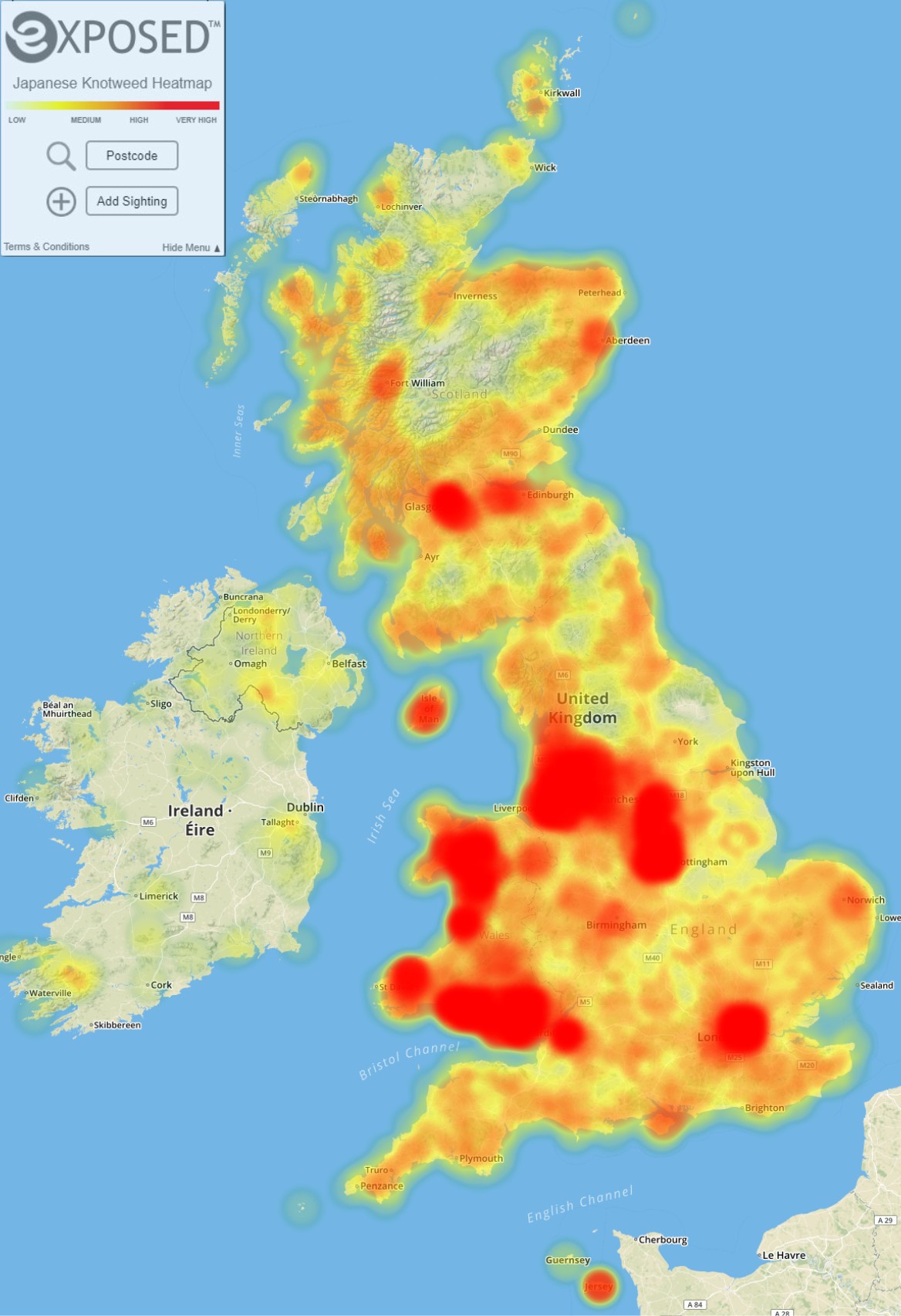Regional Japanese knotweed hotspots revealed
10 July 2019: The top Japanese knotweed hotspots in each region of Great Britain have been revealed today by Environet UK.
Bolton in Lancashire is the worst affected hotspot overall, with 652 infestations within a 4km radius, followed by Bristol in the South West and Capel Garmon in Conwy, North Wales. Clapham Common is the worst affected area in London.
Described by the Environment Agency as “indisputably the UK’s most aggressive, destructive and invasive plant”, Japanese knotweed grows rampantly along railways, waterways, in parks and gardens and is notoriously difficult to treat without professional help.
Environet has analysed data from its online heatmap Exposed: The Japanese Knotweed Heatmap, launched earlier this year, which records Japanese knotweed sightings across the UK. The map is intended to inform local homeowners and potential homebuyers of the local presence of Japanese knotweed, enabling them to enter a postcode to discover the number of reported knotweed sightings nearby, with hotspots clearly visible in yellow or red.
Table 1: Top Japanese knotweed hotspot in each region of Great Britain
| Region | Location | No. of infestations within 4km |
| North West | Bolton, Lancashire | 652 |
| South West | Bristol | 433 |
| Wales | Capel Garmon, Conwy | 395 |
| Yorks & Humber | Rotherham | 318 |
| East Midlands | Nottingham | 220 |
| London | Clapham Common | 192 |
| Scotland | Glasgow | 128 |
| West Midlands | Madeley, Shropshire | 89 |
| South East | Shanklin, Isle of Wight | 82 |
| East | Norwich | 72 |
| North West | Newcastle | 39 |
Japanese knotweed can deter buyers, making a property difficult to sell and prevent a mortgage lender approving a loan unless a treatment plan is in place with an insurance-backed guarantee, thereby impacting a property’s value by around 10%. Sellers are required by law to inform potential purchasers whether their home is, or has been, affected by Japanese knotweed, which can act as a deterrent even if the infestation has been treated.
Environet estimates that Japanese knotweed currently affects 4 to 5% of UK properties, wiping a total of £20 billion off house prices.
Nic Seal, Founder and MD of Environet, said, “Japanese knotweed has become a major problem across the UK, with areas of industrial heritage such as Bolton and North Wales particularly badly affected. One theory is that land moved during mining and heavy industry helped knotweed to spread, while the practice of dumping ballast from ships in the nineteenth century could have allowed it to take hold in port cities such as Bristol.
“Anyone thinking about buying a property in or around these hotspots would be wise to check the number of infestations in the proximity of their postcode and consider instructing a specialist to carry out a Japanese knotweed survey on the property to check for evidence of the plant.”
Homeowners who are concerned about knotweed infestations near their home could consider purchasing a specialist Japanese knotweed indemnity policy, which covers them for the cost of treatment, repairs, legal costs and any diminution of the property’s value, should knotweed arise.

Picture shows: Japanese knotweed hotspots around Great Britain (Credit: Environet UK)
Japanese knotweed facts
- Japanese knotweed arrived in the UK in the 1840s, in box number 34 of 40 Chinese and Japanese plant species delivered to Kew Gardens
- The plant grows at the incredible rate of around 10cm a day from May until July
- When it is fully grown it can stand up to 3 metres tall
- Knotweed blooms in late summer, when it becomes covered in tiny creamy-white flowers
- Approximately £166m is spent each year on treating the plant in the UK
- The Government estimates it would cost £1.5bn to clear the UK of knotweed
- Japanese knotweed can lie dormant under the ground for up to 20 years before suddenly re-growing
- Property owners who fail to stop the spread of knotweed on their land can face fines and even a jail sentence under ASBO legislation
To view Japanese knotweed infestations in your area or to report a sighting, please visit Environet’s heat map at: https://environetuk.com/exposed-japanese-knotweed-heat-map-information
Kindly shared by Environet
















